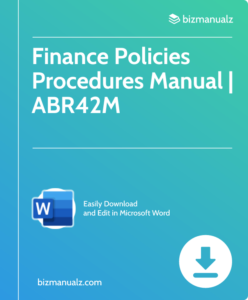10 Tips for Creating an Effective Operating Budget

Creating an effective operating budget is essential for any organization’s financial success. In order to achieve this, it is crucial to implement strategies that enable accurate forecasting, allocation of resources, and cost management. This article presents ten valuable tips that will guide you through the process of creating an operating budget that is not only comprehensive but also effectively supports the organization’s goals and objectives. 10 tips for creating an effective operating budget.
1. Understand the Purpose of an Operating Budget
By following these tips, you will be equipped with the necessary knowledge and skills to develop a budget that optimizes the utilization of financial resources and ensures long-term sustainability.
1.1 Definition of an Operating Budget
An operating budget is a financial plan that outlines the expected revenue and expenses for a specific period, usually a year. It is an essential tool for businesses and organizations as it helps in allocating resources, setting financial goals, and making informed decisions.
The operating budget takes into account various factors such as previous financial performance, market conditions, and business strategy to create a realistic and comprehensive financial plan.
1.2 Importance of an Operating Budget
The importance of an operating budget cannot be overstated. It serves as a roadmap for businesses, guiding them in managing their financial resources effectively. By analyzing revenue sources, identifying and prioritizing costs, and setting achievable goals, an operating budget enables businesses to make informed decisions and allocate resources efficiently.
It provides a framework for monitoring and reviewing budget performance, allowing for adjustments and adaptations as needed. Moreover, an operating budget helps in aligning financial goals with the overall business strategy, ensuring long-term success and sustainability.
1.3 Examples of Operating Budgets
Operating budgets can vary depending on the nature and size of the business or organization. Here are a few examples of operating budgets commonly used:
Sales Budget
A sales budget estimates the expected sales revenue based on market trends, historical data, and sales projections. It serves as a foundation for other operating budgets by providing an overview of the expected revenue stream.
Production Budget
A production budget outlines the quantity and cost of production required to meet the projected sales. It takes into account factors such as inventory levels, production capacity, and product demand to determine the resources needed for efficient production.
Marketing Budget
A marketing budget allocates funds for various marketing activities such as advertising, promotions, and market research. It helps businesses prioritize marketing initiatives and allocate resources effectively to reach their target audience and increase sales.
Personnel Budget
A personnel budget includes the costs associated with hiring, training, and retaining employees. It takes into account factors such as salaries, benefits, and employee development to ensure proper allocation of resources for the workforce.
Administrative Budget
An administrative budget covers the costs of running the day-to-day operations of a business or organization. It includes expenses such as rent, utilities, office supplies, and other administrative overheads.
2. Identify and Prioritize Revenue Sources
2.1 Evaluating Current Revenue Sources
To create a comprehensive operating budget, it is crucial to evaluate and assess the existing revenue sources. Start by analyzing the historical revenue data to identify trends and patterns. This will help in identifying which revenue sources are generating the most income and which ones may be underperforming.
Look for opportunities to optimize the existing revenue sources. This can include introducing new products or services, expanding into new markets, or improving marketing and sales strategies. By identifying the strengths and weaknesses of each revenue source, you can make informed decisions about their contribution to the operating budget.
2.2 Exploring New Revenue Opportunities
In addition to evaluating current revenue sources, it is important to explore new opportunities for generating income. This can involve conducting market research to identify untapped markets or customer segments.
Explore potential partnerships or collaborations that can help expand your customer base or diversify your revenue streams. Stay updated with industry trends and emerging technologies that can open up new revenue opportunities.
2.3 Prioritizing Revenue Sources
Once you have evaluated the current revenue sources and explored new opportunities, it is necessary to prioritize them based on their potential impact on the operating budget. Consider factors such as revenue growth potential, profitability, and alignment with the overall business strategy.
Allocate resources and budget accordingly, giving priority to the revenue sources that have the highest potential for growth and profitability.
3. Assess Fixed and Variable Costs
3.1 Understanding Fixed Costs
Fixed costs are expenses that do not change with the level of production or sales. These costs are necessary for the day-to-day operations of the business and typically include items such as rent, salaries, insurance, and equipment maintenance.
It is important to accurately assess and allocate fixed costs in the operating budget to ensure a clear understanding of the financial obligations of the business.
3.2 Analyzing Variable Costs
Variable costs, on the other hand, are expenses that fluctuate in direct proportion to the level of production or sales. These costs include items such as raw materials, direct labor, and utilities.
Analyzing and understanding variable costs is crucial for making informed decisions about production levels, pricing strategies, and resource allocation. By identifying and tracking the variable costs, businesses can optimize their cost structure and improve their profitability.
3.3 Managing Cost Fluctuations
Managing cost fluctuations is an important aspect of creating an effective operating budget. By analyzing historical data, market trends, and industry benchmarks, businesses can anticipate and plan for cost fluctuations.
This can involve strategies such as negotiating better supplier contracts, implementing cost-saving measures, or exploring alternative sourcing options. By actively managing cost fluctuations, businesses can mitigate risks and ensure financial stability.
4. Determine Realistic Financial Goals
4.1 Setting Achievable Targets
Setting realistic financial goals is crucial for creating an effective operating budget. These goals should be based on a thorough analysis of the market conditions, industry trends, and the company’s historical performance.
Take into consideration factors such as revenue growth, profitability, and return on investment. By setting achievable targets, businesses can create a sense of direction and motivation for their teams while ensuring the budget reflects the true financial potential.
4.2 Considering Market Conditions
Market conditions have a significant impact on the financial goals and projections of a business. It is important to conduct market research and analyze the external factors that may influence the revenue and expenses.
This can include factors such as competition, consumer behavior, regulatory changes, and economic trends. By considering the market conditions, businesses can make informed decisions about their financial goals and create a budget that aligns with the market realities.
4.3 Aligning Goals with Business Strategy
The financial goals set in the operating budget should be aligned with the overall business strategy. Consider the long-term vision, mission, and objectives of the business and ensure that the budget supports those strategic priorities.
This alignment ensures that financial resources are allocated to initiatives that will contribute to the long-term success and sustainability of the business.
5. Implement Effective Budgeting Techniques
5.1 Zero-Based Budgeting
Zero-based budgeting is a method where the budget is created from scratch each year, rather than using previous budgets as a starting point. This technique requires a thorough review of all expenses and revenue sources, requiring justification for each line item.
Zero-based budgeting helps businesses identify areas of inefficiency, eliminate unnecessary expenses, and allocate resources based on current needs and priorities.
5.2 Activity-Based Budgeting
Activity-based budgeting involves allocating resources and budget based on the activities and initiatives that contribute to the realization of the business goals. By analyzing and understanding the cost drivers of various activities, businesses can allocate resources more accurately and efficiently.
This technique ensures that resources are directed towards the activities that generate the most value and contribute to the achievement of the financial goals.
5.3 Rolling Budgets
Rolling budgets involve continuously updating and revising the budget throughout the year. Instead of creating an annual budget, rolling budgets are updated on a regular basis, often on a quarterly or monthly basis.
This allows businesses to adapt to changing market conditions, address budget variances, and make timely adjustments. Rolling budgets provide a more dynamic and flexible approach to financial planning and help businesses stay responsive to the ever-changing business environment.
6. Allocate Resources Efficiently
6.1 Optimizing Resource Allocation
Efficient resource allocation is key to the success of an operating budget. Analyze the needs and priorities of the business and allocate resources accordingly. By identifying areas of inefficiency, eliminating redundancies, and reallocating resources, businesses can optimize their cost structure and improve their financial performance.
6.2 Prioritizing Essential Expenses
Identify the essential expenses that are critical for the day-to-day operations and long-term success of the business. These may include costs associated with maintaining product quality, ensuring customer satisfaction, or complying with regulatory requirements.
By prioritizing essential expenses, businesses can ensure the allocation of resources to areas that directly contribute to the achievement of their financial goals.
6.3 Avoiding Overallocation
While it is important to allocate resources effectively, it is equally important to avoid overallocation. Overallocating resources can result in unnecessary costs and inefficiencies.
Carefully evaluate resource requirements, consider the trade-offs, and ensure that resources are allocated to the areas that provide the highest return on investment. By avoiding overallocation, businesses can maintain a lean and efficient budget that maximizes their financial performance.
7. Monitor and Review Budget Performance
7.1 Establishing Key Performance Indicators
To effectively monitor and review budget performance, it is essential to establish key performance indicators (KPIs) that reflect the financial goals and priorities of the business. These KPIs can include metrics such as revenue growth, profit margins, return on investment, and budget variance. By regularly tracking and measuring these KPIs, businesses can evaluate their financial performance, identify areas of improvement, and make data-driven decisions.
7.2 Regularly Tracking Expenses and Revenues
Tracking expenses and revenues on a regular basis is crucial for budget performance monitoring. Implement systems and processes to accurately capture and record all financial transactions. This can involve using accounting software, setting up regular financial reporting, and conducting periodic audits. By tracking expenses and revenues, businesses can identify budget variances, prevent fraud or financial discrepancies, and ensure the accuracy of the financial data used for decision-making.
7.3 Analyzing Budget Variances
Budget variances occur when the actual financial results deviate from the budgeted expectations. Regularly analyze and review budget variances to understand the reasons behind the deviations.
This can involve conducting variance analysis, comparing the actual results with the budgeted amounts, and identifying the root causes of the variances. By analyzing the budget variances, businesses can identify areas of improvement, implement corrective actions, and make adjustments to future budgets based on the lessons learned.
8. Adjust and Adapt the Budget as Needed
8.1 Flexibility in Budgeting
Flexibility is key when it comes to budgeting. Recognize that the business environment is constantly evolving, and unexpected changes can occur. Ensure that the operating budget allows for flexibility and includes contingency plans to address unforeseen circumstances.
By creating a flexible budget, businesses can adapt to changes, respond to unexpected events, and maintain financial stability.
8.2 Anticipating and Managing Changes
While it is impossible to predict every change that may occur, businesses can proactively anticipate and manage changes to a certain extent by preparing for multiple business budget scenarios. Keep up-to-date with industry trends, regulatory changes, and economic shifts that may impact the financial performance of the business. By staying informed and proactive, businesses can respond swiftly to changes and adjust the budget accordingly.
8.3 Revising the Budget in Response to Market Shifts
Market shifts can have a significant impact on the operating budget. Monitor and evaluate market conditions regularly and revise the budget as needed. This can involve adjusting revenue projections, identifying and mitigating risks, and reallocating resources to areas with higher growth potential.
By revising the budget in response to market shifts, businesses can ensure that their financial goals remain achievable and aligned with the business strategy.
9. Involve Stakeholders and Seek Feedback
9.1 Collaborating with Managers and Departments
An effective operating budget requires collaboration and input from various stakeholders within the organization. Engage managers and department heads in the budgeting process to gain insights into their specific needs and expectations. By involving key stakeholders, businesses can ensure a more comprehensive and accurate budget that reflects the realities of the operations.
9.2 Gathering Input from Team Members
Seek input from team members who are directly involved in the day-to-day operations of the business. They may have valuable insights and suggestions for improving the budget or identifying potential cost-saving measures. Encourage open communication and create a feedback loop to gather input, address concerns, and ensure that everyone feels invested in the budgeting process.
9.3 Considering Feedback for Budget Improvement
Consider the feedback received from stakeholders and team members and incorporate it into the budgeting process. Evaluating and implementing suggestions for improvement can lead to a more accurate and effective operating budget.
By considering feedback, businesses can tap into the collective wisdom of the team and ensure that the budget reflects the diverse perspectives and expertise within the organization.
10. Continuously Improve and Refine the Budgeting Process
10.1 Learning from Past Budgeting Cycles
To continuously improve the budgeting process, businesses should learn from past budgeting cycles. Conduct a thorough review of the previous budgets, analyze the results, and identify areas for improvement.
Reflect on the successes and failures of the past budgets and incorporate those lessons learned into the next budgeting cycle. By learning from the past, businesses can refine their budgeting process and make informed decisions for future financial planning.
10.2 Incorporating Lessons Learned
Incorporate the lessons learned from past budgeting cycles into the ongoing budgeting process. This can involve implementing changes to the budgeting techniques, adjusting the allocation of resources, or implementing new strategies based on the insights gained from the previous budgets.
By incorporating lessons learned, businesses can continuously improve and refine their budgeting process, leading to more accurate and effective operating budgets.
10.3 Implementing Technology Solutions
Technology solutions can greatly enhance the budgeting process, making it more efficient, accurate, and collaborative. Explore accounting software, budgeting tools, and financial analytics platforms that can automate key tasks, provide real-time insights, and facilitate collaboration among stakeholders.
By leveraging technology solutions, businesses can streamline their budgeting process, reduce errors, and improve the overall effectiveness of the operating budget.
Tips for Creating an Effective Operating Budget
In conclusion, creating an effective operating budget requires a comprehensive approach that encompasses various factors such as revenue sources, costs, financial goals, budgeting techniques, resource allocation, performance monitoring, and continuous improvement. By following the outlined steps and incorporating best practices, businesses can develop a robust and realistic operating budget that serves as a roadmap for financial success.
















Leave a Reply